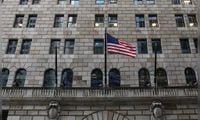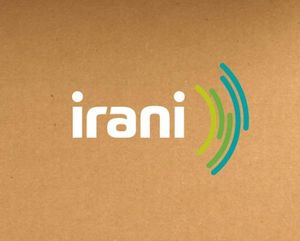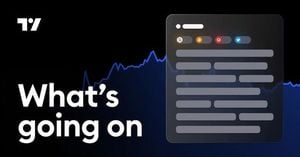As the global economy faces a turbulent landscape marked by increasing trade tensions and fears of stagflation, the cryptocurrency market is feeling the pinch. Bitcoin, the world's most popular cryptocurrency, has seen a staggering 20% drop in value during the first quarter of 2025, with analysts predicting further declines in the upcoming months. According to Woramet Chansen, an investment adviser at Merkle Capital, Thailand's first digital asset fund manager, this downturn reflects a broader concern about risk assets amid slowing economic growth and the Federal Reserve's cautious approach to interest rate cuts.
In March, Bitcoin hit a low of $76,600, the lowest price seen in four months. Ethereum, the second-largest cryptocurrency, was not spared either, plunging 55% from its recent high, marking a 16-month low. "These sharp corrections reflect rising investor concerns over risk assets," Woramet noted, emphasizing the impact of the Fed's recent signals that rate cuts may not come as quickly as markets had hoped.
The minutes from the Fed's Federal Open Market Committee meeting revealed that the U.S. economy is expected to grow more slowly than previously forecast, and inflation is running hotter than anticipated. This backdrop raises the specter of stagflation—characterized by stagnant growth and elevated inflation—placing additional pressure on risk assets.
Looking ahead, Woramet suggests that while the market may remain under pressure in the second quarter, it could also represent a potential bottom, paving the way for mid-term growth opportunities. "Despite the corrections, Bitcoin and Ethereum could present attractive medium- to long-term investment opportunities," he said, particularly with Bitcoin's upcoming halving event, which could reshape market dynamics.
In Thailand, the total digital asset market value was reported at 73.6 billion baht in March, a 4.45% decline from February. The average daily trading volume also fell to 1.82 billion baht, down 20.2%, with the number of active trading accounts decreasing to 151,000—a 13.1% drop month-on-month. Globally, the digital asset market was valued at $2.82 trillion, reflecting a 5.2% decline, with Bitcoin accounting for 58.1% of the total market capitalization.
As the cryptocurrency market grapples with these challenges, the U.S. economy is simultaneously facing a significant policy dilemma. Sameer Goel, Global Head of Emerging Markets & APAC Research at Deutsche Bank, described the current situation as a classic stagflationary shock, where growth is slowing while inflation rises. Goel remarked, "We are seeing a classic stagflationary shock to the U.S. economy, where growth is marked lower and inflation is marked higher." This uncertainty is damaging confidence in U.S. assets, as all major asset classes—equities, bonds, credit, and even the dollar—are experiencing simultaneous sell-offs.
Goel highlighted that the current weakness of the dollar is not by design but rather a result of poor policy execution and credibility issues. "The objective of the policy is to rebalance trade… not necessarily to devalue the dollar," he explained. In contrast, the Reserve Bank of India (RBI) appears to have more room to maneuver, with Goel suggesting the repo rate could fall to 5.5% or even lower due to falling inflation.
On Wall Street, the impact of the Fed's comments on tariffs was stark. On April 16, 2025, U.S. stocks plummeted, with the Dow dropping 700 points (-1.73%), the S&P 500 sinking 2.24%, and the Nasdaq declining by 3.07%. Fed Chair Jerome Powell's remarks on tariffs being "unprecedented" and likely to trigger "higher inflation and slower growth" sent traders into a frenzy, underscoring the fear of a stagflation vortex.
The ongoing U.S.-China trade war has escalated to alarming levels, with a tariff wall now standing at a staggering 245%. This has led to significant market volatility, as traders react to the implications of such aggressive trade policies. Gold, often seen as a safe haven during turbulent times, surged past $3,300 per ounce, marking a 26% increase for the year. Investors are increasingly turning to gold as a hedge against the uncertainty surrounding U.S. trade policy and the broader economic outlook.
Meanwhile, the situation in the oil market was somewhat more stable, with Brent crude prices rebounding above $65 per barrel for the first time in a week. This recovery was aided by Iraq's announcement to trim oil exports by 70,000 barrels per day to meet OPEC+ quotas and a bullish U.S. inventory report showing a significant drop in oil stockpiles.
In a significant geopolitical development, Japan's Government Pension Investment Fund (GPIF), the world's largest pension fund, has removed China A-shares from its foreign equity benchmark. This move signals a strategic repositioning away from Chinese assets and could lead to increased investment in U.S. and Japanese markets. As Goel pointed out, "This isn’t just a tweak — it’s a neon-lit exit sign from mainland Chinese risk," indicating a broader trend of reallocating capital away from China.
The evolving landscape of global finance and trade is complex and fraught with challenges. As central banks navigate the difficult waters of inflation and growth, investors are left grappling with uncertainty. With the Fed's policy direction unclear and trade tensions escalating, the coming months will be critical for both traditional and digital asset markets. Investors are advised to remain vigilant and assess their risk tolerance carefully in this volatile environment.






